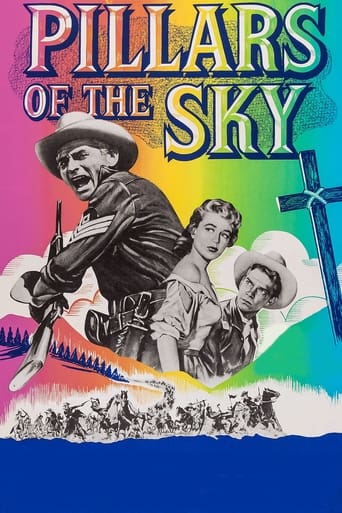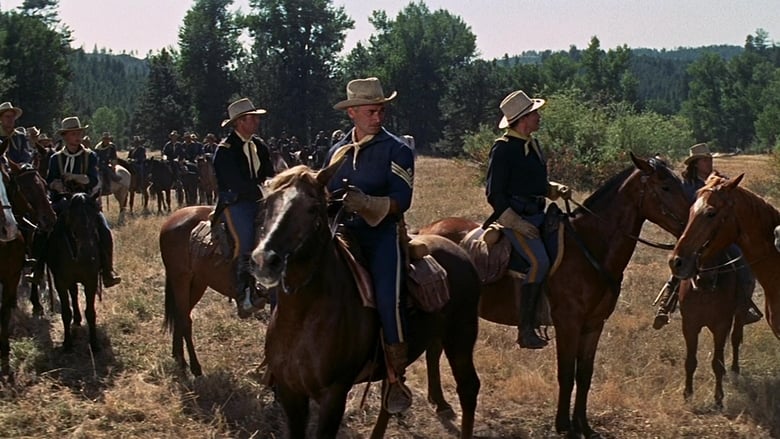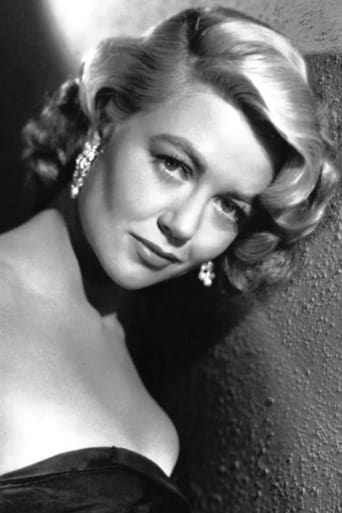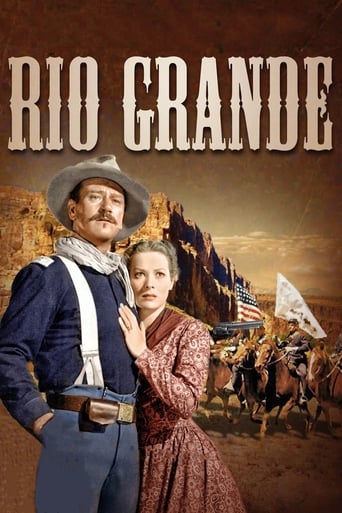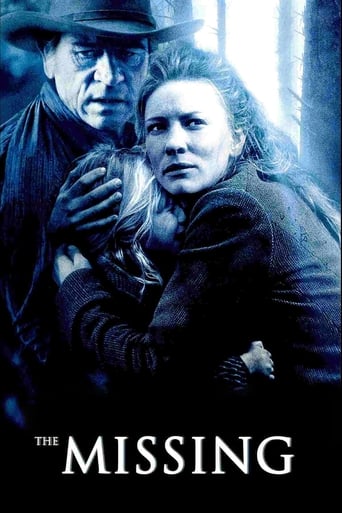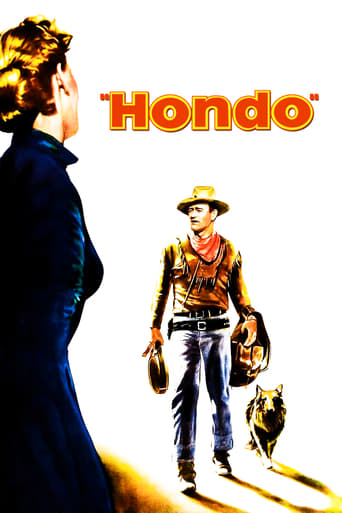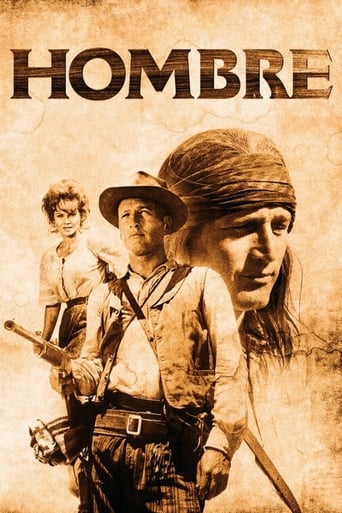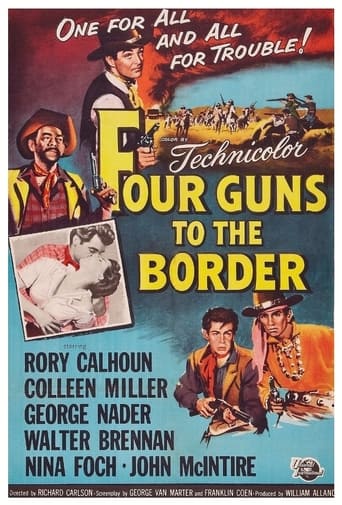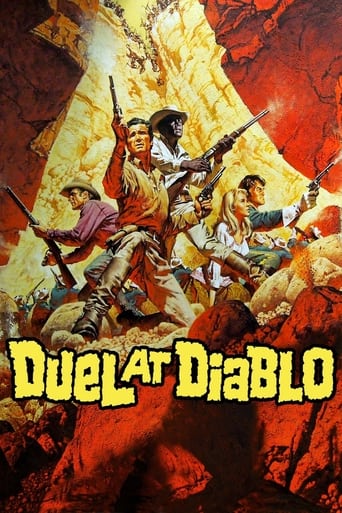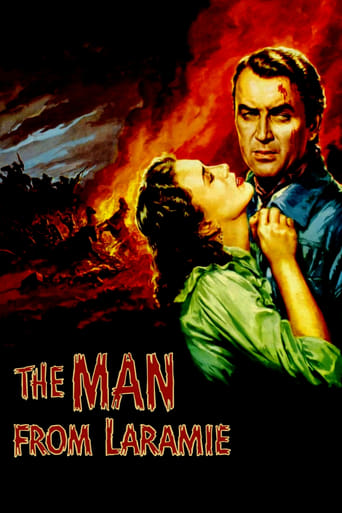Pillars of the Sky (1956)
First Sergeant Emmett Bell faces off with Apache chieftain Kamiakin in this nuanced portrayal of racial tensions between Native Americans and white settlers in 1860s Oregon Country.
Watch Trailer
Cast


Similar titles
Reviews
Very disappointing...
That was an excellent one.
The story-telling is good with flashbacks.The film is both funny and heartbreaking. You smile in a scene and get a soulcrushing revelation in the next.
Like the great film, it's made with a great deal of visible affection both in front of and behind the camera.
Pillars of the Sky (AKA: The Tomahawk and the Cross) is directed by George Marshall and adapted to screenplay by Sam Rolfe from the novels "Frontier Fury" & "To Follow a Flag" written by Will Henry. It stars Jeff Chandler, Ward Bond, Dorothy Malone, Keith Andes and Lee Marvin. A Technicolor/CinemaScope production, photography is by Harold Lipstein and music is by Joseph Gershenson.Oregon County 1868, and the Native Indian tribes have been shunted on to government sanctioned reservations. As the U.S. troops arrive to lay the roads through Indian territory for new settlers, the Indian chiefs decide to fight back. Led by Chief Kamiakin (Michael Ansara), the Indians attack leaving the army short on numbers, all that's left is a small band of soldiers and some civilians. Can they survive on guts and religious comfort alone? It was originally intended to be made with John Ford directing and John Wayne starring, but come 1956 the pair were unable to commit to the production. They had another Western to make that year, The Searchers! Plot is familiar for Pillars of the Sky, but the even handed portrayal of the Indians and a pro-Christian bent in the narrative, lifts it out of the ordinary. Picture is further boosted by some excellent action sequences that are skilfully crafted by director Marshall (Destry Rides Again/How the West Was Won). Indian attacks, via horseback or flaming arrows assault, considerably raise the pulse, while the sight of the army desperately trying to conquer the rocky terrain while under attack is a bona fide piece of Oater grit. With the exteriors actually filmed on location in Oregon at Joseph & La Grande, the backdrop is gorgeous, expertly brought to life in Technicolor "Scope" by Lipstein (No Name on the Bullet/Von Ryan's Express). While Gershenson (Horizons West/The Man from the Alamo) scores it with genre compliant riffs on Cavalry marches and Indian flavouring.That it isn't better known or thought of higher comes down to a so so set of acting performances and a pointless love triangle that pads the picture out with boorish periods of chat. Malone, looking beautiful as per usual in colour, is basically a token character, who serves only to be a romantic interest that causes friction between Chandler and Andes. In fact her dialogue is minimal. Marvin has only a small role, and he offers up a quite poor Irish accent as well, while Andes fails to convince. Chandler does cut a decent rugged figure, portraying First Sergeant Emmett Bell as a man you would fight alongside, but it's a performance that lacks charisma, something that Duke Wayne no doubt would have brought to the role. It's left to Bond to take the acting honours, where in an unusually restrained role for him as strongly Christian Dr. Joseph Holden, he gives good value for money as he plays it out with stoic nobility. With a great DVD transfer and the correct aspect ratio used, the film looks absolutely terrific. It has flaws for sure, but it comes easily recommended to the Western fan. 7/10
Pillars of the Sky is an unusual western in that it touches on the role of Christian missionaries in the American West. This film also gives Ward Bond one of the most unusual roles he ever had in his career.Bond plays a Christian missionary preacher/doctor in the Pacific Northwest region. There is still considerable debate among historians as to what they accomplished. It was thought at the time that the conquered Indian tribes would be more humanely treated under preachers than soldiers. There is no doubt that missionaries, not only in the American west, but in other parts of the world colonized by the west, probably saved indigent peoples from some acts of barbarism. Whether though, even with the best of intentions, they had the right to destroy a culture is very much open to debate. And Bond is a man with the best of intentions even as he baptizes the Indians giving them names found in the Bible. One Indian who isn't having any of it is Michael Ansara who's rousing all the tribes to resist the building of a new army post in their territory. But Colonel Willis Bouchey has his orders and Bond is caught in the middle.Another trio caught in the middle is Captain Keith Andes, his wife Dorothy Malone, and Sergeant Jeff Chandler who Malone was previously engaged to. Malone and Olive Carey are captured by Ansara's bunch and Chandler rescues them. This little romantic subplot is exactly what the cavalry doesn't need as Ansara's band is on the hunt for them.Pillars of the Sky was filmed on location in the Pacific Northwest and the photography is first rate. And the Indian attacks are well staged by some very smart Indians. Ansara is a cunning and ruthless foe.It also succeeds in making you admire the courage of our cavalry in carrying out their orders though in fact they are in clear treaty violation. One of the best roles in the film is that of Lee Marvin, an army veteran from the Civil War who is giving the green troops some lessons for survival in a hurry.I did find it a bit much the end Jeff Chandler has in store for him and I think most viewers will also. As Chandler said, Bond may have given the Indians the priceless gift of his God, but was the cost worth it?
This fine western is a cavalry-Indian affair that has the usual treaty-breaking by the government as it builds a road and fort on Indian land that causes an uproar and leads to war. The military's action sets in motion cavalry-Indian hostilities and the tribes gather for an attack on the fort. Many of the Indians have been baptised and converted to Christianity by a white missionary and live in peace with the soldiers, many serving as scouts under a sergeant played by Jeff Chandler. Complicating matters are two white women the Indians hold as hostages who are at great risk should war break out. Chandler did some his best work in westerns and is the lieutenant whom the Indian soldiers respect and follow faithfully. Chandler's flirtation with a married woman, played by Dorothy Malone, doesn't have much to do with the story other than to give the leading man a romantic interest. Ward Bond, Michael Ansara and Keith Andes are good in supporting roles. Oregon's scenic beauty is on display in this CinemaScope film.
Given the basically no-star cast and the fact that it came from Universal-International, it's understandable that you might think this would be just another run-of-the-mill "B" oater--and you'd be dead wrong. This first-rate western has several things going for it. The breathtaking Oregon locations have been beautifully captured by Harold Lipstein's expert Technicolor cinematography. The colors are lush, and the photography is so atmospheric you can almost feel the chill in your bones as the troops slog through the rugged mountain country. There are several rousingly staged and exciting action scenes, notably a somewhat lengthy sequence in which a wagon train loaded with troops cuts its way through a mass of charging Indians. The performances by a cast of veteran character actors--Lee Marvin in an early role (although his Irish brogue is a bit much), Keith Andes, Charles Horvath, Alberto Morin and Willis Bouchey, among others--are top-notch, Dorothy Malone is beautiful, Jeff Chandler gives a more authoritative (and animated) performance than he usually did and Ward Bond does an outstanding job as a caring and concerned missionary who doesn't want to see bloodshed on either side. The main thing the film has going for it, though, is the subject matter. Rather than having the usual Apaches or Comanches rampaging through the Southwest, the film is set in the Oregon mountain country, and the Indians are not superstitious savages but have been converted to Christianity by missionary Bond, and many in their religious zeal have given up their "animal" names and taken the names of Biblical figures (to further drive the point home, one soldier complains to Bond that, since he has "Christianized" the Indians, they have no qualms about attacking at night; "uncivilized" Indians never attacked at night for fear that if they were killed, their spirits would roam in the dark forever and never find peace). As far as I know, this particular facet of the Indian wars had never been tackled before or, for that matter, since. The story consistently holds your interest (although the triangle between Chandler, Malone and Andes tends to slow things down somewhat), the action scenes are terrific, the photography, as noted, is superb. A very worthy effort from veteran director George Marshall. Well worth your time.

